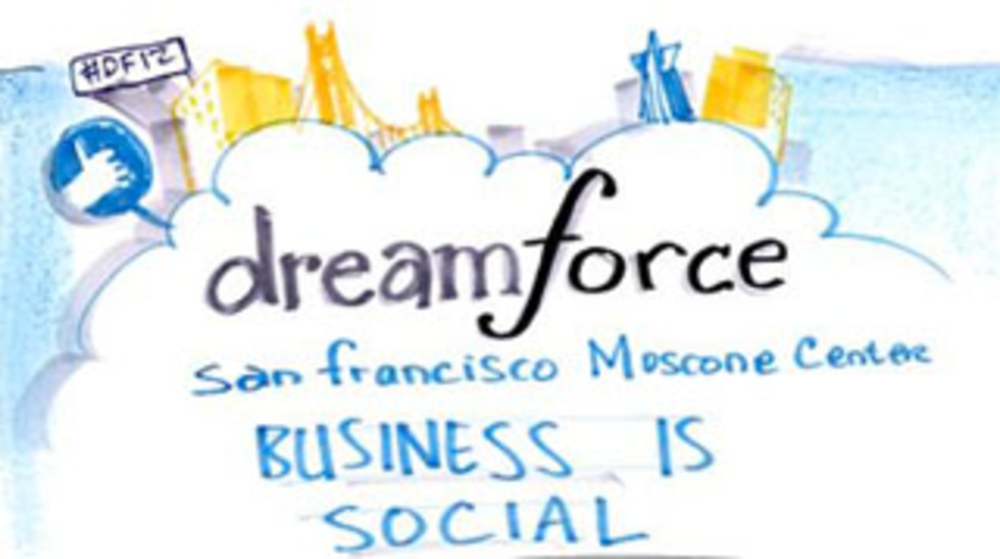Dreamforce is Norcal’s Disneyland. In terms of event organization (more blue-shirted helpers per square foot than at a Best Buy outlet), production values (the case study videos feel like Merchant Ivory films), and the crowds (roughly 90,000-plus), Salesforce.com’s annual conference is essentially the Mouse House for the tech set.
The number of attendees notwithstanding—supposedly the largest crowd ever for a business conference—what’s most notable is the type of attendee that Dreamforce 2012 draws: C-level execs—including many CEOs—from Men’s Wearhouse, Rossignol, GE, Virgin Group, and Burberry, among others.
Also, MC Hammer performed. Glad he’s still getting work.
Kudos to Salesforce’s event planners. I have trouble getting my slacker friends to agree on a time to meet at a bar. Getting the C-suite of a handful of Fortune 500 companies to meet for a 9AM MC Hammer concert and keynote speech takes some logistical miracle-working. (Key observation from Ian Jacobs, principal analyst at Ovum: “Inverse relationship between a career trajectory and how early you [are] asked to go on stage.”)
The central message company CEO Marc Benioff is intent on delivering is this: We’re in the midst of a social media revolution, which is pushing its way into every facet of the enterprise.
There’s an extent to which I’m skeptical, not of the truth of this statement, but of its “newsiness.” But even if the social revolution didn’t exactly start yesterday, it’s still interesting to see how Salesforce is opportunistically using it to entrench its cloud-based solutions into every facet of the enterprise, from sales to service—both already well-established disciplines for the company—and newer areas like HR management and marketing.
From Salesforce’s standpoint, social is the glue that drives collaboration both within and across business units. Conveniently, this facilitates implementations not just of, say, the sales application (Sales Cloud), or the customer service application (Service Cloud) or the newly-announced marketing application (Marketing Cloud)—but of the entire Salesforce stack.
And marketing has become a key component because social media by its very nature pushes it into other business disciplines like sales and service. The relationship between sales and marketing has always been obvious. Unless you’re hawking water and your demographic is a dying man in a desert, you generally don’t sell without some initial marketing. Social interactions provide more information that salespeople can use to make their case.
But it’s in service where social makes marketing almost omnipresent. Ovum’s Jacobs hatches the following thought: “If you do any customer care in a social setting, it’s marketing.” I egged him on to provide more than the shell of an idea. “In the past, if you did one-to-one type customer service, you were relying on the customer to do word of mouth,” Jacobs explains. “Now the service itself does the marketing for you.”
Still, will enterprises be willing to invest across-the-board in Salesforce’s stack? Large enterprises generally like solution sets rather than best-of-breed buys, but wouldn’t they rather avoid vendor lock-in? I asked a Salesforce exec how many customers they had that purchased Salesforce across-the-board. He was noncommittal. In the press room, I mused out loud whether Salesforce had enterprise customers that had implemented everything.
“Of course,” said one eavesdropper, an analyst whose name badge had slid between the folds of his jacket during the three minutes he was under the table trying to pull his laptop cord out of the powerstrip. “In fact, I’m consulting with a client that wants to buy it all.”
But the proof points for what Salesforce is pushing might reside in the Dreamforce attendees who I referred to earlier—both the number and their positions within the enterprise. Dreamforce grows every year (2011’s registrants totaled about 40,000); Benioff lured the C-suite of what seems like his entire large enterprise customer base to take a day off and chill in a convention center. And all of that doesn’t happen unless there is genuine enthusiasm around a message and a desire to learn more. The future Benioff’s customers see—and Benioff sees himself—is one in which the enterprise develops and nurtures social communities both within and without.








